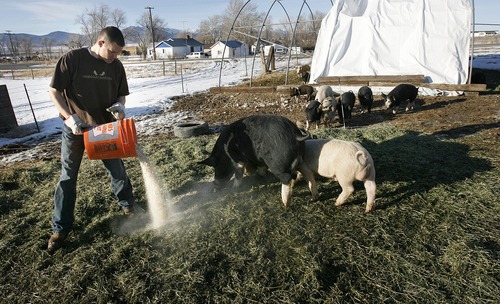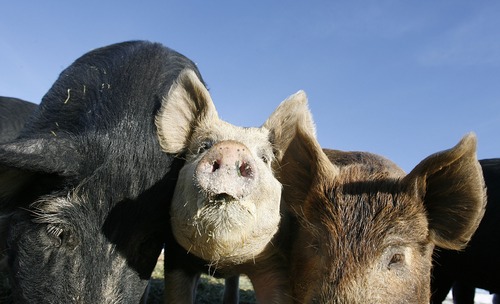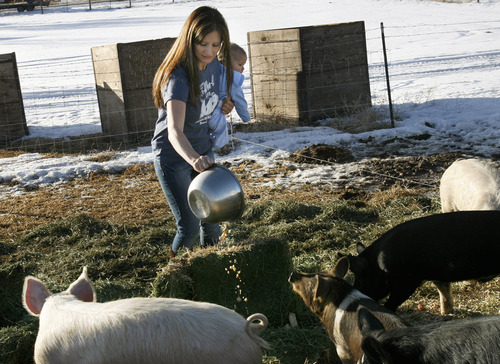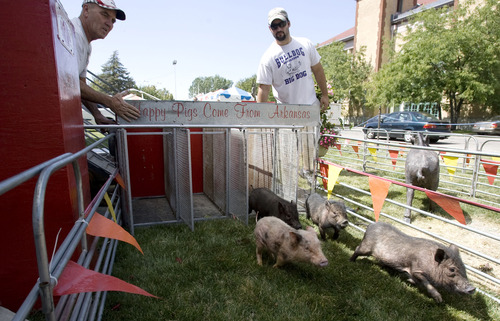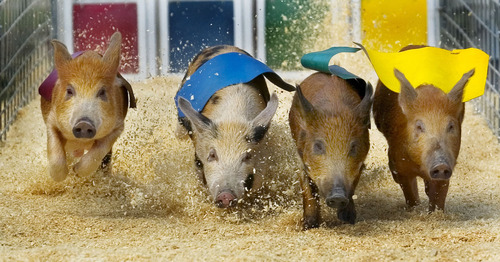This is an archived article that was published on sltrib.com in 2013, and information in the article may be outdated. It is provided only for personal research purposes and may not be reprinted.
Despite the nation's worst drought in nearly a half century, the U.S. hog and pig inventory was down only slightly in 2012 when compared to 2011, while in Utah the number of head was down 3 percent from the previous year.
The numbers ease fears that prices for pork products might spiral upward.
"Although feed costs are rising because of the drought, the report shows that the hog industry in Utah is continuing to be strong," said John Hilton, director of the Utah Agricultural Statistics Office, which complied the state numbers.
Nationwide, the inventory of all hogs and pigs in December was nearly 66.35 million head, compared with 66.36 million for the same time in 2011, according to the U.S. Department of Agriculture.
In Utah, the inventory totaled 740,000 hogs and pigs, state report shows.
The drought initially ravaged crops, a feed stock source, fueling worries that animal numbers would drop noticeably, putting pressure on beef and pork prices. But crop harvests, although down, did not drop to levels originally feared.
Total state inventory of hogs (older swine weighing more than 120 pounds) and pigs (less than 120 pounds) was down 3 percent from Dec. 1, 2011 — but up 1 percent from the previous quarter.
Breeding hogs in Utah totaled 80,000 head, a number unchanged from Dec. 1, 2011. In addition, 426,000 pigs were born from September to November, up slightly from the same period in 2011.
Nationwide, the breeding inventory, at 5.82 million head, was up slightly from 2011, and up slightly from the previous quarter, even as the drought impacted the feed supply. Market hog inventory, at 60.5 million head, was down slightly from 2011, and down 2 percent from the last quarter.
Iowa was the top-producing state, with 20.6 million head, followed by North Carolina with 9 million head. —
Hogs and pigs
Utah ranking • No. 15 producer in nation, with 740,000 head in 2012
Top U.S. producers • Iowa, North Carolina, Minnesota, Illinois and Indiana, respectively
Utah history • 2007 banner year, 790,000 head; 1866-1868, record lows at 4,000 head each year, when records started
Source: U.S. Department of Agriculture


